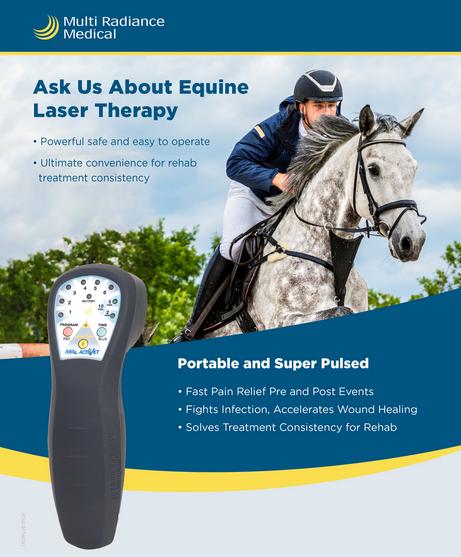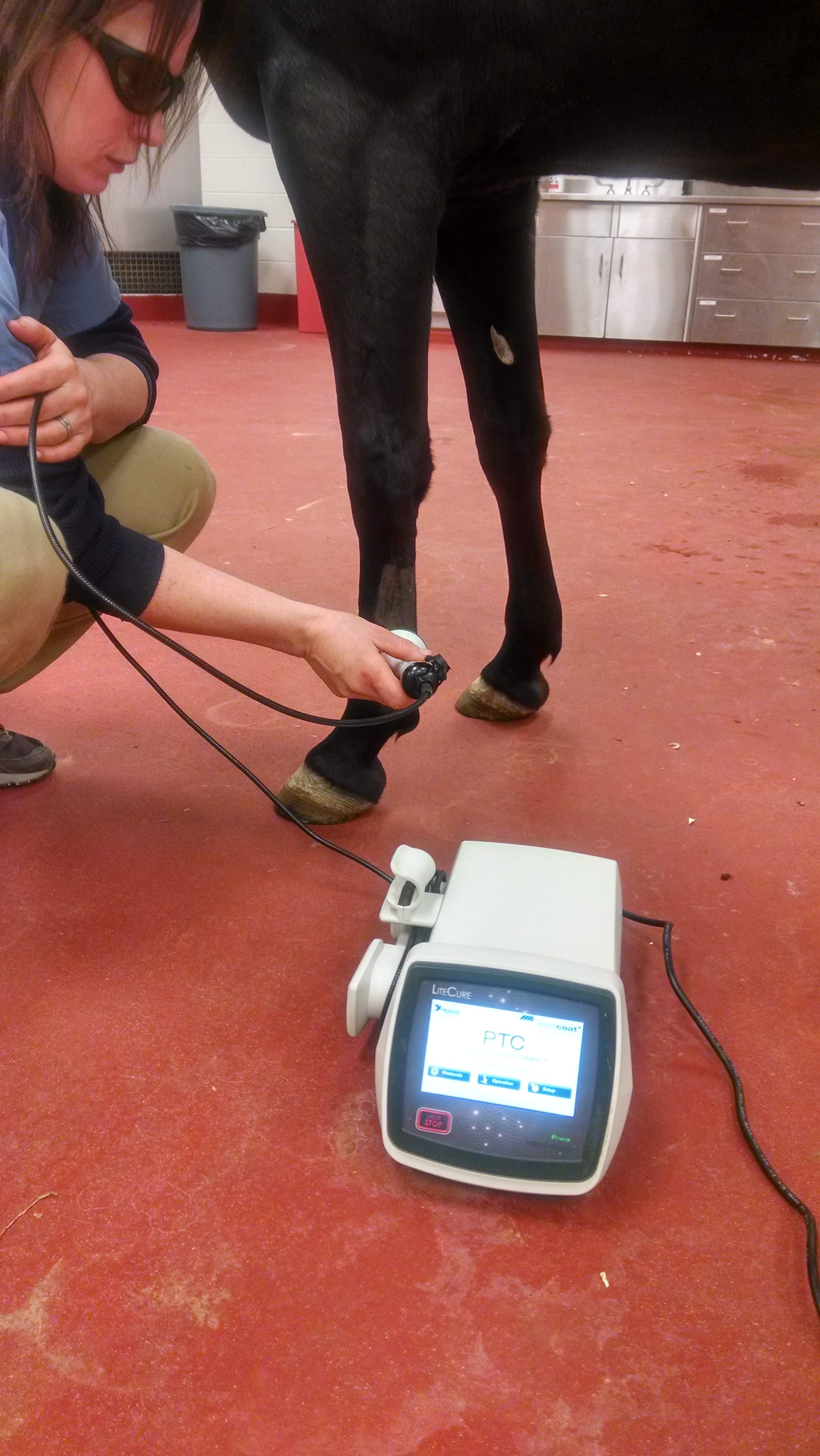The Power of Equine Therapy for Anxiety, PTSD, and Psychological Recovery
The Power of Equine Therapy for Anxiety, PTSD, and Psychological Recovery
Blog Article
How Laser Treatment in Horse Therapy Is Changing Veterinary Treatment for Horses
Laser therapy has actually arised as a transformative method in equine vet care, providing a non-invasive option that accelerates healing and improves general health. The transportability and adaptability of laser treatment tools additionally underscore their expanding indispensability among veterinarians.

Comprehending Laser Therapy
Comprehending laser therapy is essential for valuing its duty in equine therapy. Laser treatment, likewise referred to as photobiomodulation, includes the application of certain wavelengths of light to cells, which can lead to numerous biological effects. This therapeutic technique uses the power of light energy to penetrate the skin and underlying cells, stimulating mobile procedures and enhancing tissue repair.
The technology behind laser treatment is based in the principle of photochemistry, where photons are absorbed by chromophores within cells, leading to enhanced ATP manufacturing and inflection of reactive oxygen varieties. This, in turn, advertises mobile proliferation, reduces swelling, and increases healing. Vet experts make use of various kinds of lasers, consisting of low-level lasers (LLLT) and high-power Class IV lasers, relying on the details therapeutic goals and the nature of the equine problem being dealt with.
Different laser wavelengths and power settings are thoroughly chosen to target various tissue midsts and achieve desired scientific results. Safety and security procedures are critical, as inappropriate use can cause thermal damage or suboptimal healing impacts. Therefore, a comprehensive understanding of laser treatment's mechanisms and applications is vital for its efficient execution in equine vet method.
Benefits for Horse Health
The myriad benefits of laser treatment for equine wellness incorporate improved recovery, discomfort decrease, and improved wheelchair. This innovative treatment modality leverages specific wavelengths of light to permeate cells, boosting mobile feature and advertising fast cells repair service. The non-invasive nature of laser therapy guarantees very little stress and pain for the equine, promoting a smoother healing process.

By reducing inflammation and pain, and enhancing tissue repair service, laser treatment aids in bring back joint feature and muscle mass adaptability. Thus, laser therapy stands as a transformative tool in contemporary equine veterinary treatment.
Usual Conditions Dealt With
Laser therapy has emerged as a functional treatment alternative for a variety of usual equine problems. Furthermore, laser therapy is efficient for problems like osteoarthritis, where it helps minimize joint inflammation and advertise cells repair service.
Wound monitoring is another area where laser therapy has actually revealed substantial promise. Chronic injuries or slow-healing abscess can be especially difficult in equines, but laser treatment boosts mobile regrowth and improves blood flow, therefore accelerating the recovery procedure. Additionally, laser treatments have been efficiently employed in handling hoof conditions such as laminitis and abscesses, relieving discomfort and advertising faster healing.
Equine professional athletes usually endure from performance-related issues like muscle discomfort and tension cracks. Laser treatment help in reducing muscle tiredness and speeds up the recovery of micro-injuries, hence making certain that steeds return to come to a head efficiency more promptly. By addressing these diverse conditions, laser therapy is transforming the landscape of veterinary treatment, offering a non-invasive, reliable choice to standard treatments.
Technology Behind Laser Therapy

Laser tools used in vet medicine often make use of have a peek here low-level laser therapy (LLLT) or cool laser therapy. Unlike high-powered medical lasers, these devices operate at lower power degrees, enhancing healing advantages while decreasing thermal damage. The energy from the laser light stimulates adenosine triphosphate (ATP) manufacturing, boosts mobile metabolic process, and accelerates cells repair processes.
Modern laser therapy tools for equine therapy is created with adjustable settings to cater to the certain requirements of various tissues and problems. Equine Therapy. Specifications such as wavelength, power thickness, and therapy duration can be finely tuned, supplying customized healing solutions. navigate to this website Furthermore, innovations in laser technology have resulted in the development of portable, handheld devices, making it simpler for veterinarians to offer therapy in a selection of settings, from centers to stables. This technical advancement is a cornerstone in the changing of equine veterinary care.
Success Stories and Situation Research Studies
Showcasing the tangible benefits of laser therapy, numerous success tales and study illuminate its transformative influence on equine health. One such case includes a pure-blooded racehorse struggling with persistent tendonitis. Typical therapies yielded minimal renovation, but after incorporating laser treatment right into the regimen, the equine showed considerable reductions in inflammation and discomfort within weeks, eventually returning to affordable auto racing.
An additional engaging instance features a dressage horse diagnosed with serious neck and back pain, limiting its performance. A veterinary team utilized low-level laser therapy (LLLT) to target the irritated locations, leading to marked renovation in flexibility and a noteworthy reduction in pain. Over several sessions, the steed regained its peak type, showcasing the efficacy of laser therapy in addressing bone and joint problems.
Furthermore, a research study performed at a leading equine facility analyzed 50 steeds with various soft cells injuries treated with laser treatment. The outcomes were striking: 85% of the horses showed sped up healing times and boosted see this site mobility. These instances highlight the convenience and efficiency of laser therapy in equine medication, providing a non-invasive, scientifically-backed method to improving healing and efficiency in steeds.
Conclusion
Laser therapy is transforming equine vet treatment by providing a non-invasive therapy that speeds up recovery, lowers swelling, and relieves pain. With its effectiveness in treating a variety of conditions, from musculoskeletal injuries to chronic disorders like osteoarthritis, this technology significantly boosts equine wellness and wheelchair. The portability and flexibility of laser therapy additionally highlight its transformative influence on veterinary techniques, solidifying its role as a crucial device in modern-day equine medical care.
Report this page